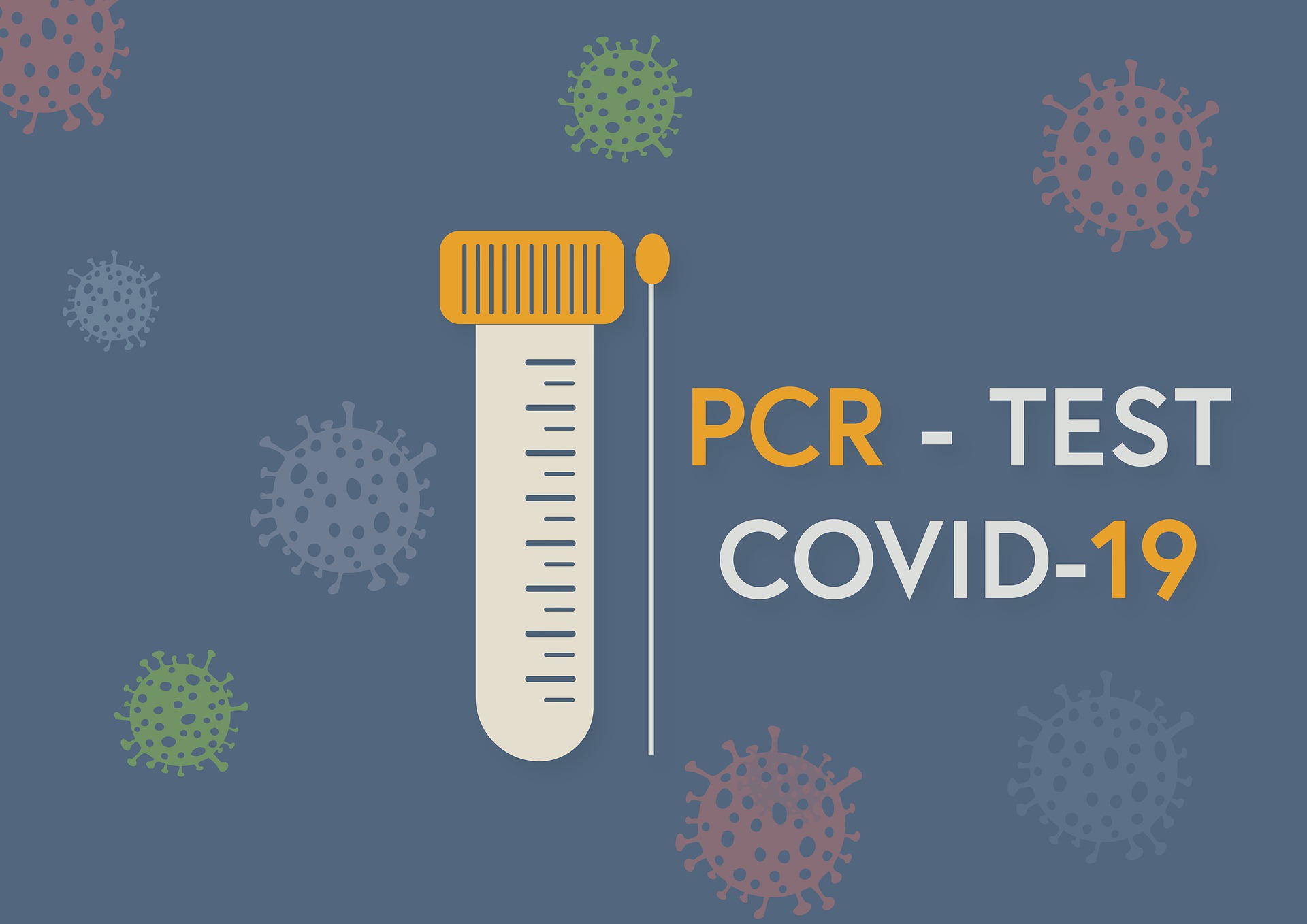The omicron wave is rolling through many families – and continues to puzzle in individual cases. Some remain asymptomatic, while others are plagued by fever and other symptoms. And still, others are not infected at all, despite positive points in the household. Some explanations are based on the CT value in positive PCR tests, which reflects the viral load in the mouth and throat.
Some test providers now report the CT value in the event of a positive PCT test. It indicates how many steps are needed to amplify the viral RNA before it can be detected. In other words, the higher the CT value, the lower the virus concentration in the tested sample. Values below 20 indicate a high viral load – and thus usually high infectivity.
The situation becomes more critical at higher values: In many countries, a CT value of 30 has been agreed as the threshold value – above which the risk of infection is considered rather unlikely. In Austria, for example, infected persons are cleared after five days even if the sample is positive, but the value is above 30. But this is a convention: At the Olympic Games in China, the threshold value was set at 35 – only then were athletes who tested positive allowed to leave quarantine.
Positive at what level?
In PCR testing, this also raises the question of up to what level someone is considered to have tested positive for a new infection. In many cases, this “cut-off” is made at a CT value of 35; anything above this is considered negative. In Vienna, however, “Alles gurgelt!” shows a sample as positive up to a value of 39. According to Mario Dujakovic, spokesman for the Vienna City Councilor for Health Peter Hacker, the aim is to detect new infections as early as possible.
Usually, the viral load always follows a similar course in the course of infections: it rises sharply within a short time after infection and then gradually decreases after a peak. Against this background, a single CT value is meaningless, Stephan Aberle, a virologist at Meduni Vienna, told orf.at. The factors of time and dynamics are relevant, i.e., the point in time within the course of infection.
Above all, the increase happens very quickly with the Omicron variant, Aberle said. The serial interval, the distance from infection to passing on, was reduced with Omicron, he said: “That shortened from three to four days to two to three days.” Much of the passing on of the virus happens precisely in this initial phase, the virologist said.
Few make it through free testing on day five.
But how quickly the viral load then drops varies significantly from person to person. In some infected people, especially those with apparent symptoms, it takes up to two weeks and sometimes even longer for the CT value to rise above 30. In evaluating around 73,000 cases of “Alles gurgelt!”, Fifty-eight percent attempted to free test themselves before the end of the ten-day quarantine, as the nationwide Covid Crisis Coordination (GECKO) noted in its report at the end of January. One must already have been without symptoms for a free test for two days.
Only 17 percent of those who tried on the first possible day, the fifth, were successful. On the following days, i.e., from the sixth to the ninth, around half managed a negative test or a CT value above 30. Aberle, however, points to several international examples in which free testing and a CT value threshold have been abandoned, and infected persons are automatically released from isolation after a few days because it is assumed that infections are unlikely and therefore no longer play a significant epidemiological role.
A question of probability
In other documented cases, an infection can only be detected for a short time – and even there, the CT value never falls below the threshold value of 30, despite close-meshed testing. And yet, it has been proven that infections occur in the family circle. According to the experts, this is unlikely, but it can happen. However, an early study from Great Britain in 2020 already indicated that infections could also occur late and with a high CT value.
The impact of immune protection through vaccination combined with new virus variants on the diversity of infection courses is still largely unexplored. In itself, the length of the infectious phase and the level of virus excretion is probably no different with Omicron than with Delta, says virologist Dorothee von Laer of Meduni Innsbruck to ORF.at concerning corresponding studies.
The effects of immune protection by vaccination combined with new virus variants on the diversity of infection courses are still largely unexplored. In itself, the length of the infectious phase and the level of virus excretion is probably no different with Omicron than with Delta, virologist Dorothee von Laer of Meduni Innsbruck tells ORF.at, referring to corresponding studies.
Difficult safety margin in quarantine
In any case, it seems plausible that such infections with high CT values occur primarily in settings where people are in very close contact over a long period – for example, in a household in quarantine. Once introduced into the home, it is ordinarily tricky or impossible to distance oneself enough to avoid infection.
One of the significant problems of coronavirus is right there – and has become even more prominent with the high case numbers of the omicron variant: Who gets infected, when, and who doesn’t – and who has symptoms, and how severe? A handful of factors have been quickly identified for challenging courses, first and foremost age. But various pre-existing conditions and severe obesity, for example, also increase the risk.
Mild courses in children are the most likely explanation: studies suggest that the child’s immune system is much more active in the upper respiratory tract than in adults. According to these studies, the messenger substance interferon, which ensures a rapid and robust immune response to the invading virus, appears to be responsible for this.
Mild is relative
Otherwise, there are still very few indications of factors for mild symptoms – although mild has also turned out to be a very relative term, especially in the case of Omikron. Soft mostly means that no hospital treatment is necessary. But this ranges from a one-day cold to up to several days of high fever. However, the CT value hardly provides any clues because the viral load alone does not indicate a specific course of the disease.
It is certain that vaccination, especially with booster shots and previous infection, also reduces disease risk even better with additional vaccination. This was still very clear with Delta, but Omikron frequently bypasses this immune protection. Nevertheless, the vaccination is effective even then: As with the previous variants, the infected persons fall ill less often and, if so, more mildly and for a shorter period. A Swiss study – not yet peer-reviewed – also suggests that vaccinated individuals are less likely to infect others, thanks to smaller amounts of actually infectious viruses.
CT values are hardly comparable
Often, attempts are made to explain infections in the same household, for example, who infected whom and when with the help of the CT value. Family members do not always test positive simultaneously, and sometimes there is a kind of “relay race” in which it is difficult to explain the timing of the infections.
Sometimes the CT value, if known, is used as an orientation to explain the timing of the infections. But one of the main pitfalls of the CT value is that it suggests accuracy and comparability that it does not have: Because it is dependent on sampling, preparation, and test equipment. Not all laboratories work with top quality, criticized the Society for Laboratory Medicine president, Georg Mustafa, as early as mid-January. CT values with different sample collection and evaluation are therefore only comparable to each other to a limited extent.
Fluctuations normal
Aberle, a virologist, sees a source of distortion above all in the sampling process. It depends on how many infected cells are caught – and this can vary, especially in the early stages of infection. Von Laer also points out that the tissue is not evenly affected: “You have to think of it as kind of nests of infection, distributed among the affected tissues, into which the immune cells then migrate and gradually eliminate the respective microfoci.” The removal technique, he said, is likely the factor that provides the most significant variability in determining CT value.
Omicron also challenges being more detectable initially, particularly in the throat, than the other variants. Nasal swabs then show a low viral load. Gargle tests may also bring a slight bias: “Everything gargles!” poses less of a problem than other providers because a saltwater solution is used and the rinse time is one minute, according to Hacker spokesman Dujakovic. Even if only the mouth area is rinsed, existing viral RNA can be detected, he said.
Nevertheless, “jumping” CT values in infected persons can also result from samples of varying quality. If someone has a value of 26 and a value of 31 on several days in a row, this is neither surprising nor problematic, says Aberle.
Many questions open
A very high singular CT value without “history” can also indicate a false-positive result, although this is quite rare in PCR tests. A possible reason here is that genome residues from an infection that occurred a very long time ago are still detected. In some infected persons, oscillations of the CT value last longer, and according to virologist Monika Redlberger-Fritz, the virus is excreted only very slowly.
According to virologist Aberle, at least conceivable, but probably extremely rare, is also a “touch” of no longer infectious viral RNA, which somehow makes it into the sample and then triggers a positive test result. Overall, however, the matter is complex, and the experts said many questions are still unanswered.
- source: orf.at/picture: Image by Alexandra_Koch from Pixabay
This post has already been read 2473 times!



